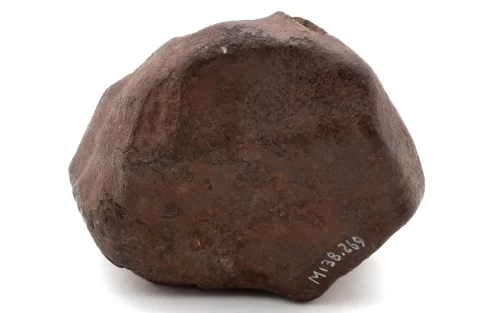Dimmitt
Ordinary chondrite, H3.7
Found in Texas, United States, 1942
This ruddy chondrite fell in prehistoric times near what is now Dimmitt, Texas. Dimmitt is classified as a rare H3.7, joined in this classification by many Antarctic meteorites that are virtually unattainable. The strewn field has yielded an impressive amount of Dimmitt meteorites, and it’s now one of the largest meteorites known from North America.
Dimmit H-chondrites are regolith breccia, meaning they’re composed of angular rock fragments that have been cemented together. “Regolith” refers to the upper surface of the parent body. As such, Dimmitt meteorites have been and have been known to contain clasts of other types of rock, such as LL5 and carbonaceous clasts. Regolith breccias also contain solar-wind gases and solar-flare tracks.
Showing the single result
